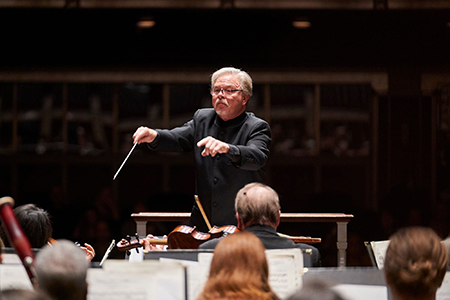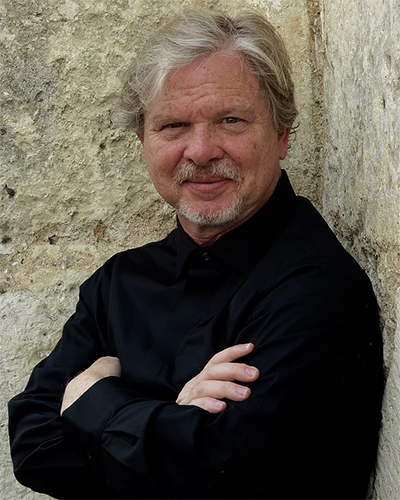by Daniel Hathaway

The cast includes Dorota Sobieska (as Manon Lescaut), Mikhail Urusov (Chevalier Renato des Grieux), Jonathan Stinson (Lescaut), Francisco Prado (Geronte di Revoir), Brian Skoog (Edmondo), Loren Reash-Henz (Innkeeper), Elizabeth Frey (Singer), Cory Svette (Dance Master), and Jeremy Gilpatric (Sergeant of the Royal Archers).
The story of Manon Lescaut originated from the pen of Antoine François Prévost d’Exiles (1697-1763), commonly known as the Abbé Prévost, a worldly character and prolific writer who began his career as a Jesuit, ended up as a Benedictine monk, and famously wrote the chronicle of the courtesan Manon Lescaut in the seventh volume of his Mémoires et aventures d’un homme de qualité.
The tale gained such currency that it became the subject for operas by Daniel Auber in 1856 and Jules Massenet in 1884. After two earlier attempts at crafting theater works (Le Villi and Edgar), the 32-year-old Puccini took up the story in 1890, completing his Manon Lescaut in 1893 with the help of six librettists, and mining his earlier works for some of its musical material. Asked why he decided to undertake his own setting, the composer retorted, “Massenet feels it as a Frenchman, with powder and minuets. I shall feel it as an Italian, with a desperate passion.”
Conductor John Thomas Dodson mused about the music of Manon Lescaut in a recent phone conversation. “This score is so interesting, coming as it does only ten years after Wagner’s death. Puccini uses Wagner’s technique of leitmotiv — establishing a melodic gesture, locking it into the ear, then letting it take on all kinds of new psychological meaning as the story progresses.
“The first time I heard Manon Lescaut, I realized that Puccini’s music would have been impossible without Wagner. Not just the orchestration, but the way the notes and harmony are working.” Dodson said that causes your whole ear to prick up. “Puccini uses melodies in ways that either invoke memory or anticipate what’s to come.”
And though the composer insisted that his opera would tell the story from an Italian emotional perspective, Dodson sees another musical influence at work. “What composer was current in 1893? Debussy,” he said, answering his own question. “It’s so easy to file Puccini under Verdi, but he knows what’s in the air. In addition to issues that Wagner had already taken up, Puccini plays with colors and harmonies that are really new. Debussy is often in the background, particularly in ecstatic moments of love.”

Part of that longer arc depends on musical color. “In the first act, the orchestration is bright and colorful, not at all subtle, and its melodies are street songs singable by the young students onstage. This is the level on which you perceive love in the first part of your adult life. Here, Puccini is being self-consciously popular, and some of the music could have come from operetta.”
As the story continues, the orchestration begins to lose its luster. “By the third act, all the bright colors are gone, and in Act IV, the hue darkens considerably. The orchestration allows Puccini to follow a long storyline from physical love to jealous love, to a darker suffering love, and finally to love you’re willing to die for. Dimensions like death come in that weren’t there before.”
Dodson also points out that Puccini’s textures change during the course of the opera, comparing Manon Lescaut to the three successive versions of Beethoven’s Leonore Overture. “The first uses fine brush strokes, the second is less detailed, and by the third, the composer is using a paint roller. In the opera, Puccini slows down his harmonic changes and rhythms as the show goes on, seeking the most perfect way of telling the story with the least means.”
And lest you should think that the man in the pit is just beating time and keeping his vocal and instrumental forces together, John Thomas Dodson has his mind on a hundred dramatic details in Puccini’s score he’s eager to put across to the audience. Just one example of many he mentioned during our conversation is a little stringendo in Act IV, where Des Grieux poses a question and is waiting for Manon’s answer.
“But before the sudden acceleration, Puccini keeps the same tempo and makes you wait. Nothing really requires that, but here the composer is getting inside Manon’s head. She’s tired, thirsty, weak. It takes her a moment to process, then she has to formulate enough energy to respond — ‘even though I know I’m going to die, I have to say this.’ Both are characters of will, and both have volition in their lives. There are a couple of opportunities for her to die, but that’s for her to decide. Of course, all composers provide life extensions for their sopranos at the end.”
Published on ClevelandClassical.com November 19, 2019.
Click here for a printable copy of this article



